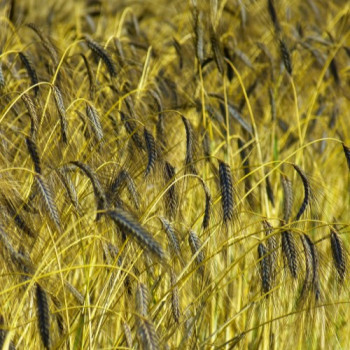BARLEY USED FOR WHISKIES



Barley is a widely cultivated crop and is used around the world by various distilleries in countries like the USA, Australia, India, the UK, and Europe. There are 2 types of this cereal, "winter" and "spring" type, with Scottish malts distilled from spring barley, while Indian malt whiskey uses winter barley. The cultivation cycle of the spring barley begins from late February to early April and harvested in August and September in Europe, while winter barley is sown between August and September and harvested the following late July to early August.
An important factor in using barley for malting and distillation is its quality, which depends on the level of nitrogen present in the barley, determined by climate, soil, and farming practices. Hot and dry conditions can result in higher levels of nitrogen, which in turn decreases the starch content. Since starch is the essential component in producing alcohol, higher nitrogen levels mean less starch and lower alcohol yield. Thus, it is not commercially viable to malt barley with higher nitrogen levels, and distillers usually require a maximum nitrogen level of 1.4-1.55 percent. Starch accounts for around 70-80 percent of the barley, with spring barley having a higher starch content than winter barley.
There are many different varieties of barley, each with unique characteristics and are evaluated using the same set of criteria. Farmers are looking for barley's ability to withstand adverse weather and disease, its expected harvest time, and its yield per hectare/acre. For maltsters, the ease of malting the barley is key, while distillers focus on the character and quality of the resulting spirit and the yield of spirit produced per tonne. Farmers typically grow different varieties of barley based on their harvest time rather than soil type. The choice of barley varieties constantly evolves, with newer varieties surpassing previous generations' performance.
The development of a new barley variety is a significant investment, requiring up to ten years of trials before commercialization. The process begins with micro and macro farm trials, followed by micro and macro malting, and finally trial runs at a distillery. New varieties are submitted for approval to organizations such as the Malting Barley Committee at the Institute of Brewing and Distilling. Provisional approval 1 is granted if successful results are achieved, followed by Provisional approval 2 or Full Approval the following year.
Plant breeders then sell the seeds and receive royalties to recoup their investment. However, the commercial success of a new variety is uncertain and can vary greatly. In Australia, the life cycle of a barley variety has decreased to around five to ten years due to the high rate of new variety development.

Great Britain provides ideal conditions for barley cultivation, as it has a maritime climate with moderate sunshine. The prime territory for growing spring barley is Eastern England, including areas such as Cambridgeshire, East Anglia, Lincolnshire, and Yorkshire. Sowing spring barley requires warm and dry weather with temperatures above 10°C (50°F) for the grain to germinate, resulting in variable sowing schedules starting from March and continuing until the end of April. The growing conditions for barley include warm and sunny weather with intermittent but regular rainfall, which helps keep the roots active and draws nutrients from the soil.
Scotland's cooler climate, compared to England, includes longer summer daylight hours, which is essential for photosynthesis. However, during harvest time, more sunshine and less rain are ideal, and the earliest harvest occurs in mid-August, while the latest occurs in late September to early October, with Aberdeenshire having the latest harvests in Scotland. The cultivation cycle in Scotland typically takes 150-160 days, compared to the warmer continental European conditions, which takes 110-120 days. After harvesting, barley is dried to a 12-percent moisture level before being malted, and malted after a period of "dormancy" of around three months.
Source: The Whisky Dictionary: an A-Z of Whisky, from history & heritage to-distilling & drinking



